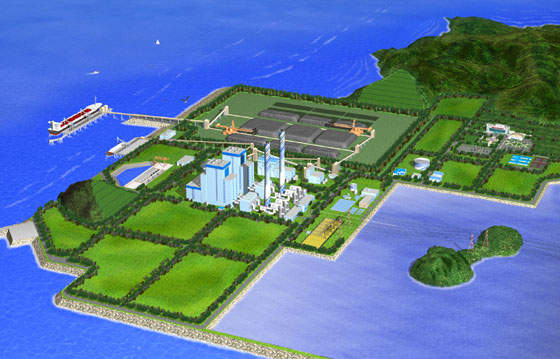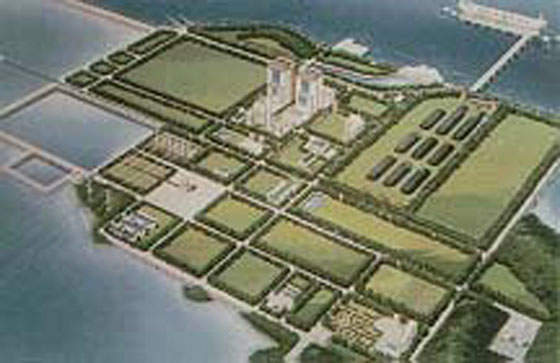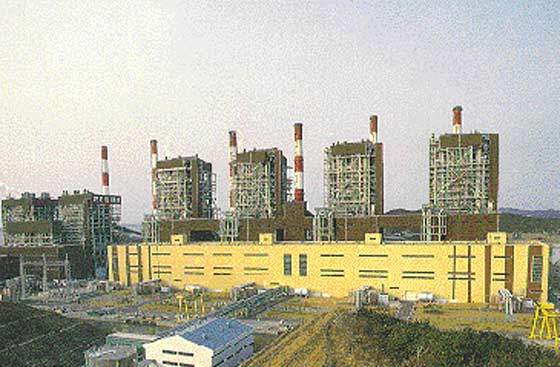The $2.5bn 1,600MW Yonghungdo plant was completed on the Yonghungdo island near Inchon, South Korea. The plant is owned and operated by Korean Electric Power Co (KEPCO), with these units the first to be constructed on the island. The original development plan was for up to six units on the site but the decline in Korean economic fortunes led to a slow down in power demand.
Yonghungdo departs from the standard South Korean coal model. Its twin supercritical coal-fired units are larger, at 800MW apiece. On-site construction began in September 1994 and equipment orders were placed in 1996.
The two units were scheduled to go online in December 2000 and 2001 respectively. However, as a result of the reduced demand resulting from the Korean recession, completion was put back to mid and end-2004.
The plant provides baseload and middle load (load follow-up) with centralised automatic control.
Completion of units three and four
The construction of Yonghungdo units three and four, part of an 870MW class coal-fired power plant, was completed in June 2009. The core facilities and equipment were provided by Doosan. The new units are eco-friendly power plants that include state-of-the-art, high-efficiency environmental facilities such as desulphurisation and electrical dust collectors.
The construction of unit one and unit two was completed in 2004. Doosan was awarded a project to supply boilers for units three and four in 2004.
Power plant make-up
Hanjung was the lead equipment supplier for Yonghungdo. US consultants Parsons Power was awarded an advisory contract to provide an on-site team to assist with engineering and design. In addition, Parsons Power also handled front-end, conceptual engineering and trained KOPEC engineers in automated design processes.
The boiler is designed for supercritical, once-through, variable pressure operation. The burners help to reduce NOx in the flue gas. The steam turbines are tandem compound, regenerating / reheat condensing, eight-stage extraction type. These drive cylindrical rotor type, three-phase synchronous generators.
Environmental control equipment includes dust coal suppression facilities, desulphurisation and denitrification facilities, an electrostatic precipitator and 200m-high stacks. There are also plant wastewater treatment facilities.
Westinghouse supplies information and control system
Westinghouse Process Control, Inc. and its representative in South Korea, Duon Systems installed the Ovation Information and Control System. Duon and Westinghouse provided the complete distributed control system (DCS) for the site, selected modules from Westinghouse’s SmartProcess Optimization Software, and hardware and software for a simulator and a vibration monitoring system.
KEPCO constructed standardised 500MW coal-fired supercritical boiler units to reduce South Korea’s reliance on oil and natural gas imports. The Ovation system and SmartProcess modules control and optimise both 800MW once-through supercritical boilers and turbine generators.
Hardware for the Ovation system at Yonghungdo includes more than 18,000 I/O devices, more than three dozen remote controllers and several servers, along with multiple operators’ and engineers’ stations, printers and other computer equipment.
The system software, based on the Emerson Process Management PlantWeb model, includes Emerson’s Asset Management Solutions (AMS) to diagnose control valves, organise device information into a central database and monitor field devices remotely. SmartProcess modules include Steam Temperature, Boiler Efficiency and Low NOx. The simulator is used for operator training and for offline diagnostics and troubleshooting.
Open architecture approach
The Ovation system uses an open architecture approach. Operating on a high-speed, high-capacity network, it uses commercially available hardware and allows easy integration with existing IT products and components while maintaining process security.
SmartProcess modules use knowledge-based functions in a fully automated ‘optimiser’ mode, sending optimum setpoints and biases directly to the DCS in a continually adapting closed-loop system. Modules may optionally operate in an open-loop ‘advisory’ mode.
Over 100 new power plants planned
Korea’s long-term plan is to build over 100 new power plants by 2015 to increase the country’s power generation capacity to 80,830MW.






